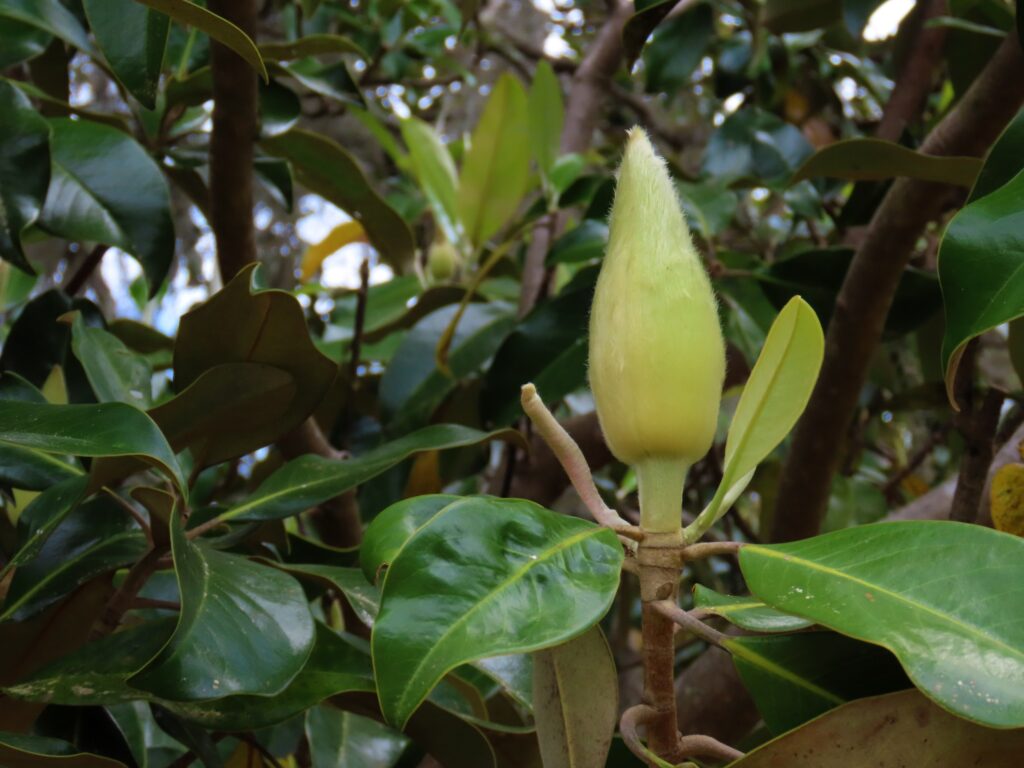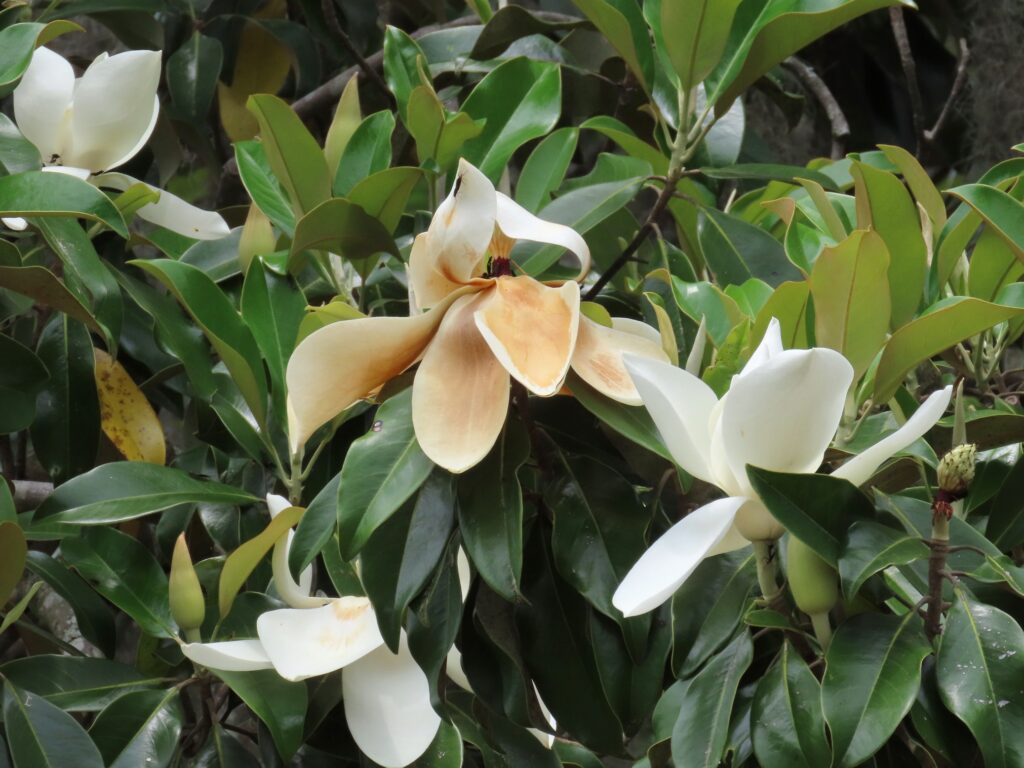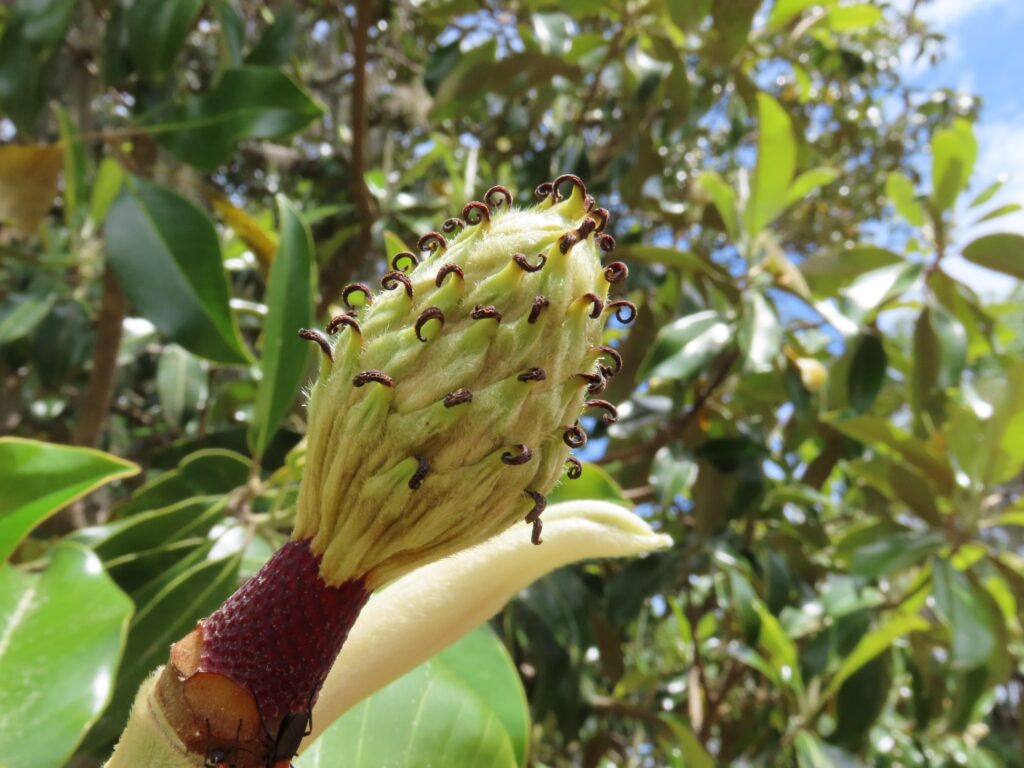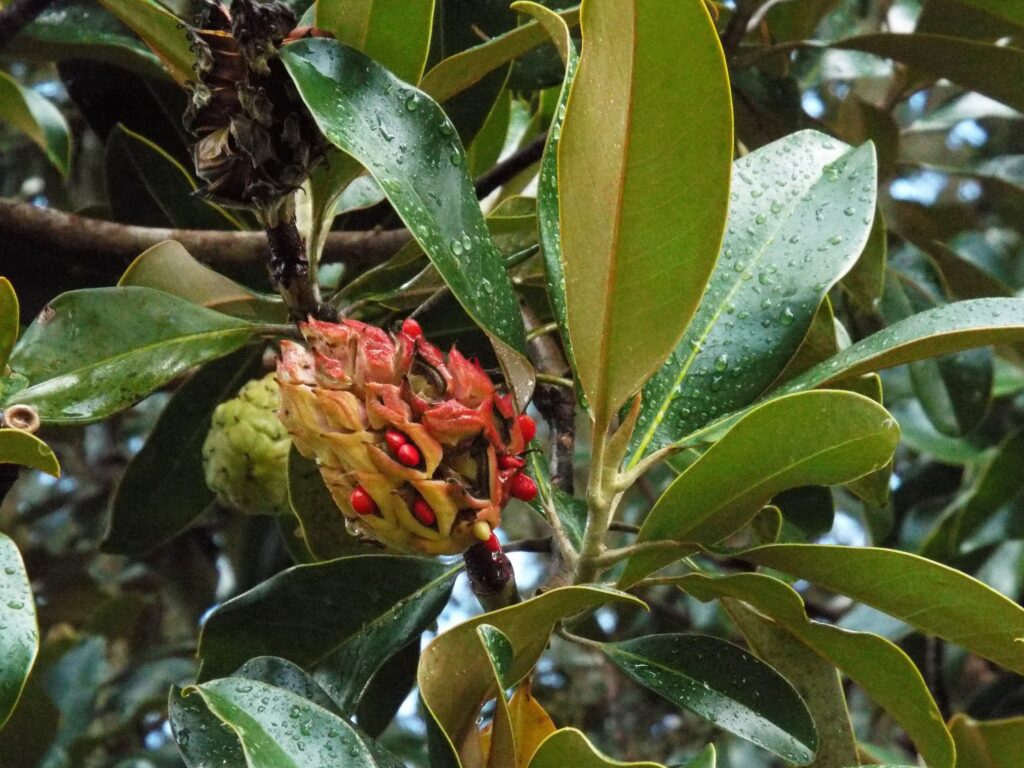




This week for Flora and Fauna Friday we have a grandly floral, fragrant hardwood, the Southern Magnolia (Magnolia grandiflora).
Southern Magnolias are a native to the coastal plain of the South, growing naturally from Texas to North Carolina. Their granite-gray trunks hang high through the understory of the forest where their inky-green leaves devour the fragments of light that trickle down onto their waxy skin. This is a tree that’s playing the long game, much like the Live Oak. Magnolias are not as hardy or long lived as Live Oaks but they make up for it with unmatched crown density. Their giant hand-sized leaves permit no light to pass below them, overlapping like the shingles of a roof. They have the firmness of dry leather, an underside upholstered with fine cinnamon velvet, and a color so deep with green it seems black beside its woodland rivals. At maturity, the abyssal vacuum of light a Southern Magnolia draws beneath permits no competition. That solar monopoly allows a South Magnolia to live a comfortable life beneath the canopy of a forest. However, a life in the interstices of the forest is not the only destiny for today’s tree. Southern Magnolias are equally well-suited for life in the spotlight, quickly reaching an impressive size in full sun. This is their plan from the start. Waiting in the throes of the forest for a neighbor to succumb to the hardships of life, a Southern Magnolia will seize any opportunity to break for the atmosphere. Supplanting the fallen plant in the oligarchy of the canopy and claiming its empire of dirt with the shadow it pours over the land. There it may stand for a century. Uncontested on its homestead of clay and sand. A patch of soil littered with leaves and fruits from years past and nothing more.
Magnolias are an ancient group of flowering plants. The quirks of their archaic origins are best observed in their flowers. Southern Magnolias produce a monstrous bloom more than a foot across. Petals pure from any color mirror the parasols of dark leaves. These china-white bowls bellow out an oppressive soft-smelling sweetness into the passing wind. A scent that saturates the air in an olfactory fog. At the center of the flower sits an egg-shaped structure on a pedestal. This cone-like feature is topped with stout curls of stigmas and skirted by cream-colored anthers, arranged like sticks in the pages of a matchbook. The entire flower is awkward and primitive compared to other flowering plants. What’s interesting is its preferred pollinators. Magnolias do not rely on bees, wasps, butterflies, regular flies, or even bats for pollination. When Magnolias entered the scene, there were no pollinators. So they enlisted the help of unsuspecting beetles. Beetles are rather clumsy pollinators, often damaging flowers in the process of pollination. Thus Magnolia flowers are adapted to be quite robust and resilient. Eventually the matchstick anthers and ivory leather petals fall away and only a warty “cone” remains. This cone grows and hardens into the fruit of the Magnolia, blushing a rosy red across its lime green skin as it ages. When ripe, the fruit splits, offering glistening scarlet seeds to the world that dangle from their cradle by silken threads, swaying precariously in the breeze. Their seeds are coated in an edible layer and eaten whole by birds, who disperse the seeds to off.